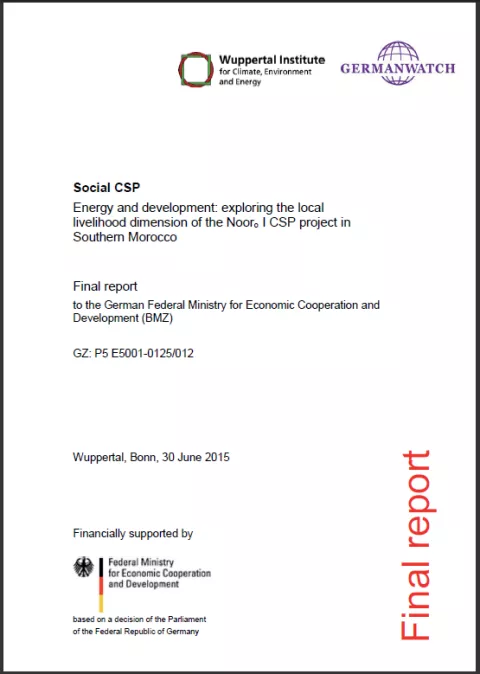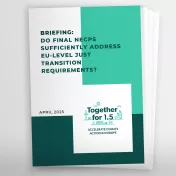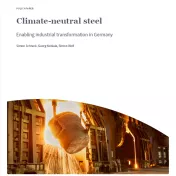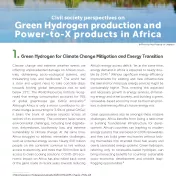
This study conducted by Wuppertal Institute and Germanwatch explores how the social pillar of sustainability at the local level could be met in Concentrated Solar Power (CSP) projects. For this purpose, the authors evaluate the livelihood dimension of CSP technology based on a case study conducted on the 160 MW pilot CSP plant Nooro I in Ouarzazate, Morocco.
Two main approaches are pursued to develop answers to the research question “What are the positive and negative livelihood impacts at the local level stemming or anticipated from CSP projects, and how can livelihood co-benefits be maximized to achieve sustainable development in adjacent communities?”:
- Analyzing and assessing livelihood consequences: By conducting a partly ex-ante empirical case study of the Moroccan Nooro I project, the authors explore how the deployment of CSP technology evolves along with the livelihood realities of local communities and could lead to both positive and negative livelihood consequences.
- Improving practice: The insights gained from the case study are combined with the analysis of existing sustainability frameworks from other fields. This allows to define applicable sustainability safeguards and best practice guidelines which can help to match the future design and operation of CSP technology with the development needs and livelihood realities of local communities.
The findings of the assessment indicate that in general the introduction of Nooro I was received very positively in the region of Ouarzazate. Although CSP technology (like any other comparable utility-scale infrastructure development) is not a panacea to alleviate regional poverty and to deliver broader socio-economic development gains, several benefits for the region were evaluated. Especially the creation of local employment opportunities, strengthened capacity, and improvements to social infrastructure in adjacent communities were found to be the most significant ways for demonstrating shared value and providing direct development prospects. Other, more indirect positive effects are strengthened family ties and social support from reversed migratory flows and an increased public interest in renewable energy.
In light of the region's precarious vulnerability context, most of the negative livelihood effects are only partially attributable to project activities. The majority of the identified change processes and adverse impacts are not new but are intertwined with the existing sustainability challenges in the region. That particularly includes impacts on land and water consumption but also a mismatch between the training currently offered by local institutions to address the requirements to work as well as a rise in local cost. Unlike the potential harm associated with mining activities and fossil fuel power plants at the local level, the negative impacts stemming from Nooro I were found to be low and significantly lower in areas including harm to public health and air and water pollution.
Based on both the results of the impact assessment and the suggestions provided by various local stakeholders, recommendations for the Moroccan Solar Plan and a set of 18 livelihood sustainability safeguards and best practice guidelines for planning and implementation schemes of CSP power plants were derived. They may help project developers, governments, and international lenders to address the needs and livelihood realities of local communities by building up CSP capacities in the MENA region. The lessons-learned generated in Morocco could enrich the sustainability debate by illustrating how utility-scale CSP projects could be designed to allow for triple wins in regards to climate protection, energy security and sustainable development.
The research was supported by the German Bonn International Center for Conversion (BICC), the Moroccan research and consultancy institute MENA Renewables and Sustainability (MENARES), the Moroccan Association Draa pour les Énergies Renouvelables, the Egyptian consultancy ETHRAA, as well as a team of independent researchers from Morocco, Egypt, Germany, and the United States.



